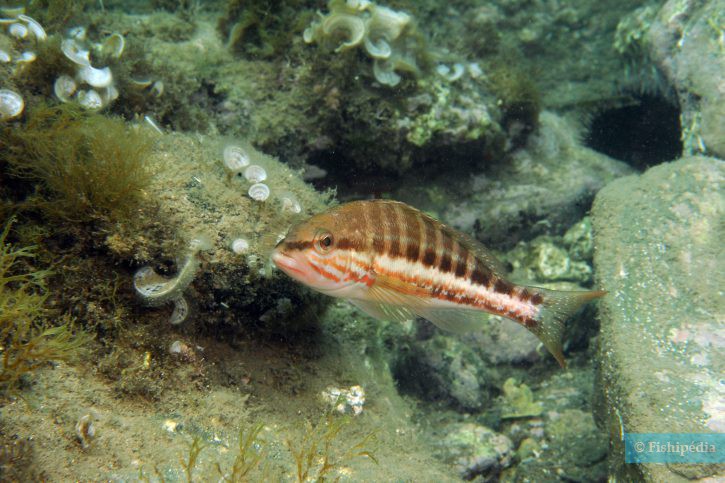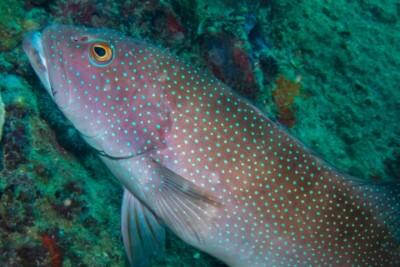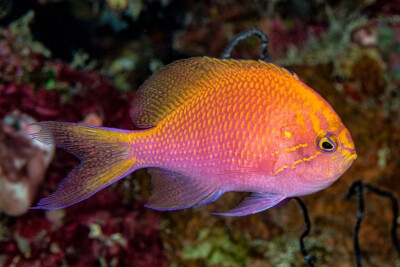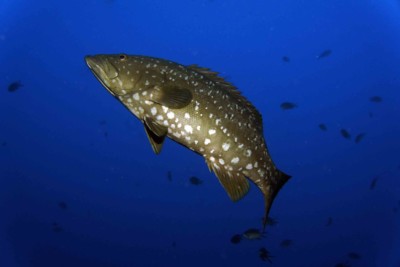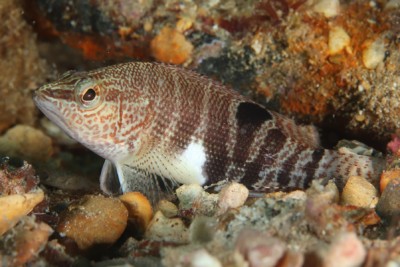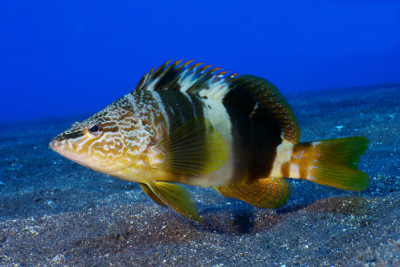Introduction
The Comber, more commonly known as the comber-chevy or comber-chevrette, is a common fish in the Mediterranean Sea. It is also found on the Atlantic coast and in the English Channel.
This carnivorous fish, a close relative of groupers, is a frequent resident of rocky bottoms and seagrass meadows.
Who is it?
Morphology
-
Average size25 cm
-
Maximum size40 cm
-
Patternvertical stripes
-
Average size25 cm
-
Maximum size40 cm
-
Patternvertical stripes
How to recognize This fish ?
The comber is multicolored, with a white belly and translucent fins. It has between 7 and 9 vertical brown stripes horizontally barred by a lighter band, and 3 brown bands that run from head to tail. Its morphology is similar to the painted comber.
The head is pointed, with a prominent lower jaw, typical of other combers.
Behaviour & Life cycle
-
dietcarnivorous
-
Sociabilitysolitary
-
territorialYes
-
Way of livingdiurnal
This solitary and territorial fish naturally resides near the bottom, at shallow depths in the northern Mediterranean, deeper in the south.
Characteristically, it tends to protect its territory. It is aggressive towards other territorial species and can engage in fights. It is generally more tolerant towards non-territorial fish.
This predator feeds on fish, mollusks, crustaceans, and worms. During the day, it remains hidden on the seabed or in small cavities. Its stripes allow it to blend effectively with seagrass blades.
Reproduction
-
Reproductionovipare qui pond en eau libre
-
HermaphroditeHermaphroditism
The comber is an oviparous fish that spawns in open water. It is a simultaneous hermaphrodite species, meaning each fish can be male or female depending on the period.
Spawning occurs between April and July in the Mediterranean and July-August in the English Channel.
Harmless species
This species does not pose a particular danger to humans when encountered in its natural habitat.
Origin and distribution
What is its habitat?
Natural environment characteristics
-
Temperature15 - 26 °C
-
Depth3 - 90 m
Biotope presentation
Combers are often found between 3 and 25 meters. However, they can also be found at other depths.
They are regularly seen lurking in rocky areas and/or near seagrass. Sometimes, they reside in muddy substrates or algae-rich areas.
Species of the same biotope
Fishkeeping
Not recommended
We do not recommend keeping this species in an aquarium. It has unpredictable needs which, if not met, generate significant stress, potentially leading to a shorter life expectancy, an interruption of its growth or the development of pathogens.
To go further
Sources & Contributions
Participation & Validation
The Fishipedia team and specialist contributors are committed to providing high-quality content. However, although the information comes from scientific sources or testimonials from specialists, the cards may contain inaccuracies.

Benoit Chartrer

Julie Magnus
Translation
Translation done with the valuable contribution of our translators, who make this information available to a wider audience. We sincerely thank them for their commitment.
Bibliographic references
- - GBIF
- - FAO Species Catalogue. Vol. 16. Groupers of the world (family Serranidae, subfamily Epinephelinae). - Heemstra, P.C - J.E. Randall - FAO Fisheries Synopsis - 1993.
- - SERRANIDAE - P.C. Heemstra - W.D. Anderson - FAO Fisheries Synopsis - 2002.
- - Competition between the comber (Serranus cabrilla) and painted comber (Serranus scriba) at STARESO, Corsica, France. - Anja Sjostrom - Ryan Stephenson - - 0.
Scientific partners
Tags
Species of the same family
Same genus
Species of the same biotope






